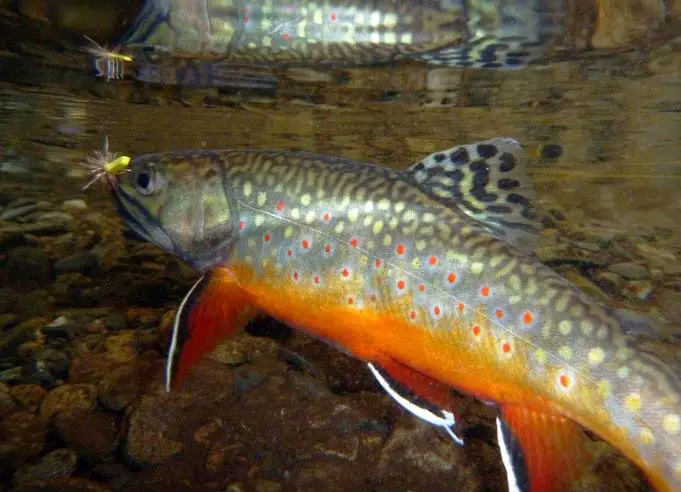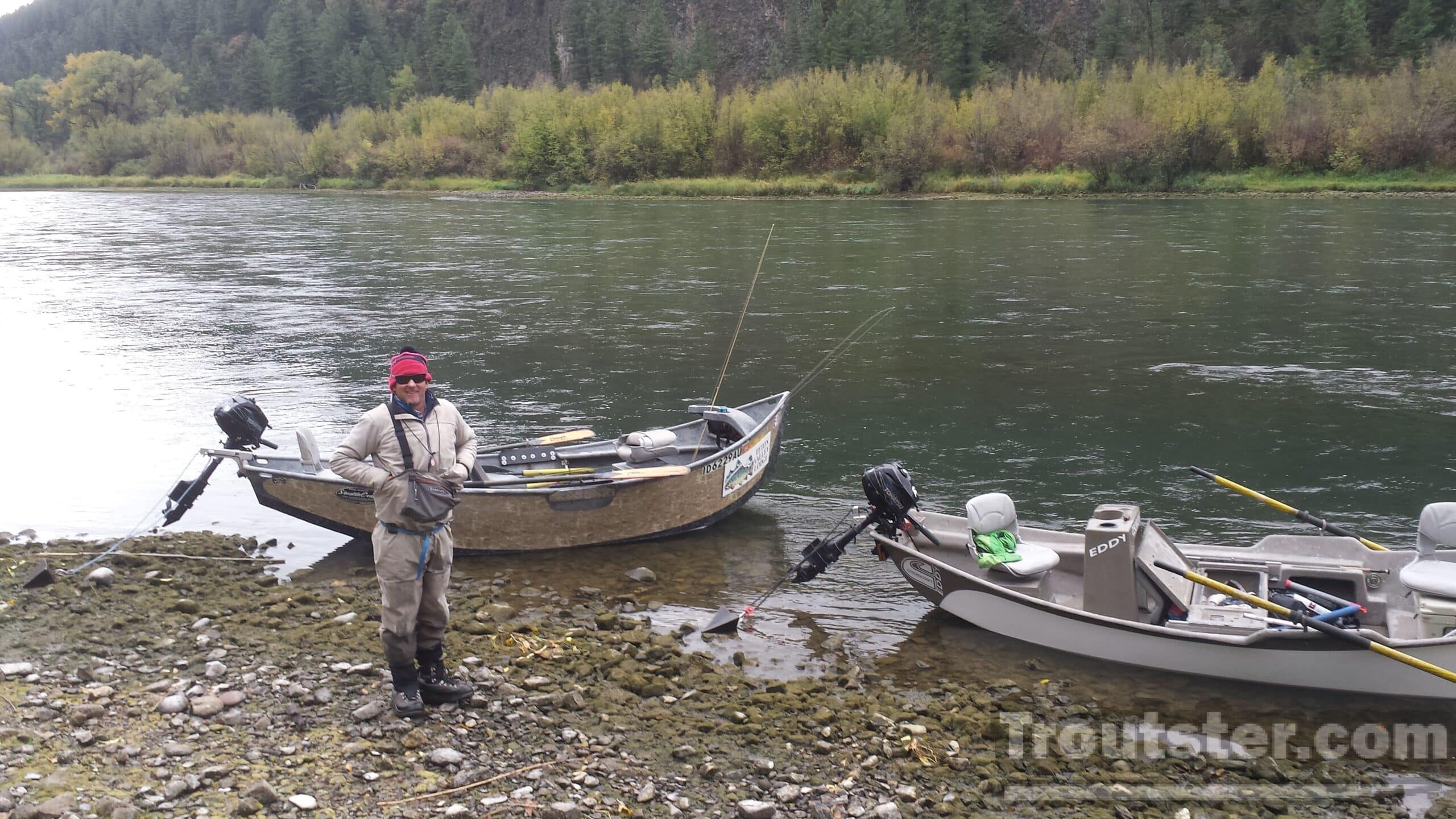This post was last updated on August 6th, 2022 at 06:44 pm
Brook Trout Fly Fishing Tips
The brook trout has never been known to be a terribly picky eater, but there are a lot of things you can do to increase your chances at catching them. While some trout species are known to be very finicky, this species is more opportunistic than other trout.
Catching a very large brook trout (salvelinus fontinalis) will still require skills and a good presentation. You won’t be able to slap your fly right on top of a trophy brookie and expect it to eat your fly; in fact it will most likely vacate the area, leaving you fishless.

The Proper Technique for Casting a Fly Towards a Feeding Brook trout
These following tips are likely the most important for ensuring success on the river, because once you spot a large rising trout, you will need to execute your plan perfectly.
- Never cast directly on top of a trout. Be sure to cast at least 6-8 feet upstream of a rising fish, they will not tolerate a bad cast. In order to look like a natural insect, your fly will have to float to the fish. This allows it adequate time to get in position to eat your fly, also the fish is likely looking more at an upstream angle than strait up above.
- Move slowly to your casting position so you don’t make waves (if you are fishing slow water) and always keep your outline broken up by trees and some sort of background. Nothing spells danger more than a shadow or a dark moving object out in the open. These fish have evolved tremendous senses and will not fall victim to a sloppy approach by an angler.
- Keep your distance. I see so many fly fisherman try to get too close to the fish before even casting. Perhaps one of the best trout fishing tips I can offer, is to cast from as far away as you can. These fish might get a little bit care free during a feeding frenzy; but they are not stupid, so keep your distance!
Matching the hatch
Everyone has heard of this, it simply means use a fly pattern that matches the natural insects in the area. Yes of course brook trout are opportunistic eaters, but they will be watching for a certain color and size of an insect during a hatch. By using a similar pattern to all of the natural flies, you are greatly increasing your chance of success.

